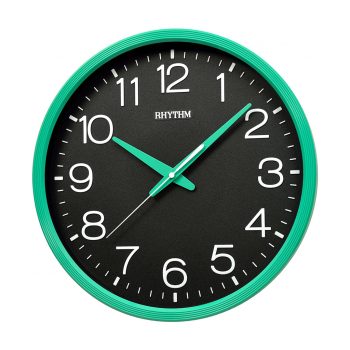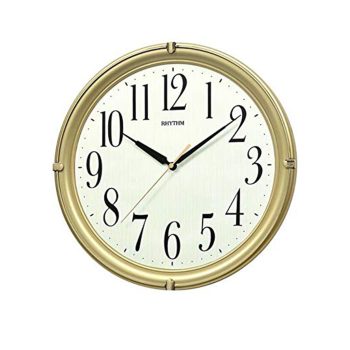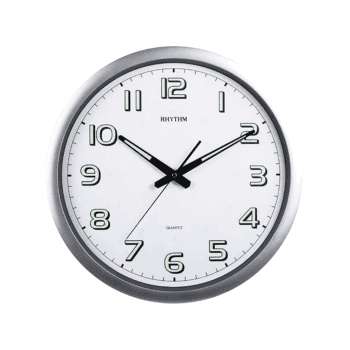Description
Rhythm Wall Clock CMG299NR06
Metallic Brown wooden and Plastic Case
60cm Diameter
silent Movement
2 Years Guarantee
Wall clocks are versatile timekeeping devices used in homes, offices, schools, and various public places. They blend functionality with design, often reflecting the style and ambiance of their surroundings.
### Types of Wall Clocks
1. **Analog Wall Clocks**:
– **Features**: Consist of rotating hands on a dial to display time. They typically have a 12-hour display format and may include a second hand.
– **Designs**: Available in styles ranging from classic and ornate to modern and minimalist.
2. **Digital Wall Clocks**:
– **Features**: Use an LCD or LED display to show time in a numerical format. They often include additional features like temperature, date, and alarm functions.
– **Designs**: Generally sleek with clear, illuminated displays, suitable for contemporary spaces.
3. **Cuckoo Clocks**:
– **Features**: Known for their hourly chimes and a small door that opens for a figurine (often a bird) to appear. Popular in traditional designs.
– **Designs**: Often feature intricate wood carvings and decorative motifs.
4. **Atomic Wall Clocks**:
– **Features**: Synced with an atomic timekeeping source for precise accuracy. Automatically adjusts for daylight saving time.
– **Designs**: Usually modern in style, ensuring high precision and convenience.
5. **Pendulum Wall Clocks**:
– **Features**: Feature a swinging pendulum for time regulation. Historically significant, often used as decorative pieces.
– **Designs**: Typically have a classic look, with detailed craftsmanship and rich materials.
### Key Features to Consider
– **Size and placement**: Consider the room size and visibility from different angles. Large areas may require a bigger clock for clarity.
– **Power Source**:
– **Battery-operated**: Common for most modern wall clocks.
– **Mechanical**: Found in traditional, weight-driven clocks requiring regular winding.
– **Electric**: Requires a connection to a power outlet, less common in newer designs.
– **Materials**: Commonly made from wood, metal, or plastic, affecting durability and style.
– **Silent Movement**: Some clocks offer a silent “sweep” movement, which is ideal for quiet environments like bedrooms or libraries.
### Maintenance Tips
– **Cleaning**: Regularly dust and clean the clock face and hands gently with a soft cloth. Avoid harsh cleaners on materials like wood or metal.
– **Battery Replacement**: Ensure the clock’s movement remains accurate by replacing batteries as needed; typically every 9 to 12 months for most battery-operated models.
– **Calibration**: Check and adjust for accurate timekeeping, especially for mechanical clocks that can fall out of sync.
### Decorative and Functional Role
Wall clocks not only serve the practical purpose of timekeeping but also enhance interior decor. They can be statement pieces that add character or subtle additions maintaining the room’s ethos. When choosing a wall clock, it is essential to consider both its functional needs and how it harmonizes with the room’s overall aesthetic.






Reviews
There are no reviews yet.